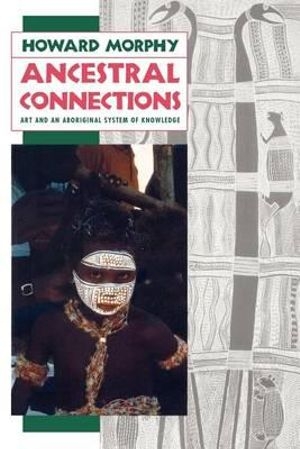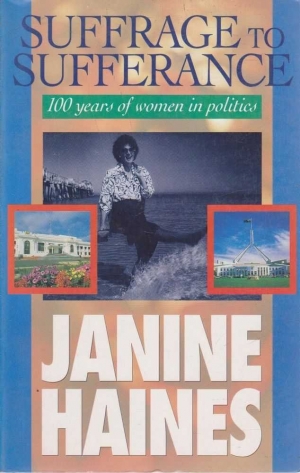Archive
Gerald Murnane reviews 'Living in a New Country: History, travelling, and language' by Paul Carter
In the mid-1980s, Paul Carter and I used to meet and talk from time to time. On a hot day just before the Ash Wednesday fires, I mentioned to Paul that I was becoming disappointed with the book of fiction that I was then writing. Paul said much in reply to this, but all I remembered afterwards was his opening sentence: ‘The only material any writer has is his thoughts and feelings.’ What Paul Carter said was not new to me, but I have often felt grateful to him for having said it to me just at that time.
... (read more)Billed on the front cover as ‘an entertaining comedy of manners’, this is exactly what this light but pacy, 500-page novel turns out to be. It is the story of Andrea, a well-off wife and mother whose life changes when her husband leaves her for someone else.
... (read more)Thomas Shapcott reviews 'Nowhere Man: Stories, 1984-1992' by John Irving
These stories are well written and rather depressing. That makes them, I guess, rather representative of what one might call the current state of short-story writing by urban males. One thinks immediately of recent collections by Garry Disher and Nick Earls. There seem to be a few basic starting off points, the most notable being in the delineation of defensiveness and insecurities that give the male characters, who are often the narrators, a sensitive but decidedly uptight response to, well, almost everything. Women, parents, children (their own), and particularly the drab world that has snuffed out some early spark of liveliness or vitality (which is usually rubbed for sympathetic magic in moments of nostalgic recall).
... (read more)Tim Rowse reviews 'Ancestral Connections: Art and an Aboriginal system of knowledge' by Howard Morphy
Morphy’s monograph is an instance of a problem in anthropological writing about Australian Aboriginal people, a problem of audiences. The public this book will reach (and please and enrich enormously) is international, made up of several thousand mostly Anglophone anthropologists students of art, particularly those researching or teaching about the contexts in which the art of non-Western peoples is created and first consumed. Yet the art of North East Arnhem Land (the Nhulunbuy/Yirrkala region) appeals to a much larger and more heterogeneous public than this. It is likely that Australians comprise a majority of this second public. Morphy, adviser to the Australian National Gallery in the later 1970s and early 1980s, can take some credit for that. And there is a third and even larger public still: those Australians who infrequently go to art galleries (they might spend a few hours in the ANG on a Canberra trip) but who are susceptible to a more informed perception of the subtlety, beauty and (most important) resilience of the classical heritage of Aboriginal culture.
... (read more)This woman was so happy she couldn’t think of anything else.
... (read more)Herb Wharton’s first novel is a highly readable account of the lives of three stockmen in far west Queensland. Sandy is a white man, Bindi a Murri, and Mulga related to both of them through his parents.
... (read more)Peter Beilharz reviews 'The Petrie Family' by Dornan & Cryle, 'Tom Petrie's Reminiscences' by C. Petrie, 'Exiles from Erin' by B. Reece, 'The Mt Kembla Disaster' by S. Piggin & H. Lee, 'Hauling the Loads' by M.J. Kenny, 'All Our Loads' by J. Shields
Why do we read what we read? Bookshelves groan with biography, travel, social theory far left corner, cultural studies creeping up the front, Baudrillard in the back door and out the front. Some people’s books get featured in the weekend papers, others go straight into the back of the car and the second-hand shops. Love, sweat and tears … what’s it all for?
... (read more)Joan Kirner reviews 'Suffrage to Sufferance: 100 years of women in politics' by Janine Haines
Janine Haines’s book, Suffrage to Sufferance is a good read. For women who are in public life and who insist on equality, it is a realistic and often humorous read. For those women who aspire to public life or simply equal rights, it is an entertaining – lost journalistic – account of where women’s aspirations might lead them. For men who understand or want to understand women’s drive for equality, there is an idea of the barriers, seen and unseen, that women face. And there is some sense of women’s struggle for political influence and recognition.
... (read more)Alison Hoddinott reviews 'Boundary Conditions: The poetry of Gwen Harwood' by Jennifer Strauss
In Boundary Conditions, Jennifer Strauss, taking her title from the Eisenhart poem of that name, points to the centrality of Gwen Harwood’s concern with ‘those littoral regions where the boundary terms that define themselves on either side of us also overlap and interact'. It is here, she claims, that ‘our most intense experiences, for better or worse, occur, and it is here that she correctly and perceptively locates Gwen Harwood’s major preoccupations as well as her recurrent images and settings.
... (read more)What is the relationship between our literary culture and the academy? Moreover, should there be any relationship between the two, or is it healthier if each remains separate, largely isolated from the other? These-questions were brought into focus for me by ‘Word Games’, a provocative essay in the Spring issue of Island, that lively Tasmanian literary magazine.
... (read more)



